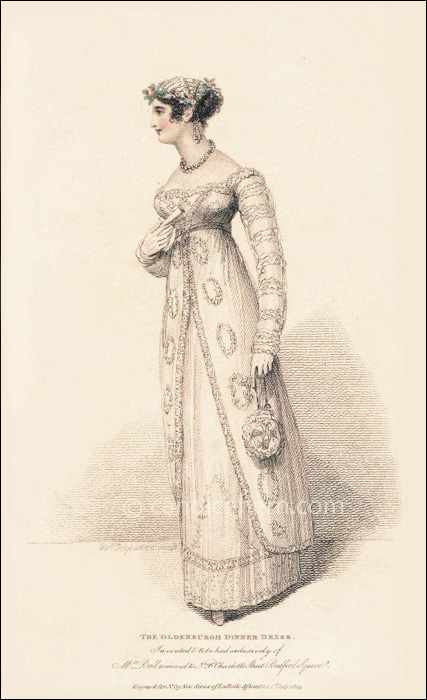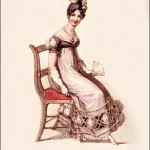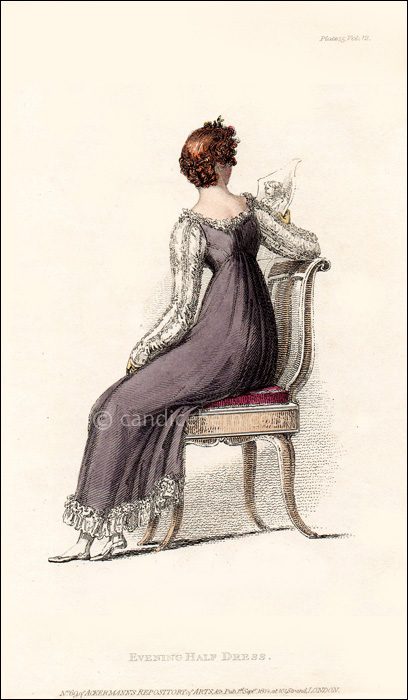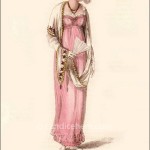“The Oldenburgh Dinner Dress.”
The Duchess of Oldenburg was the sister of the Tsar of Russia and the most popular of the allied visitors invited to London to celebrate the Treaty of Paris, following the fall of Napoleon and his exile to Elba. Lots of fashionable dresses and accessories were named for her. The amount of pearl trimming on this ensemble must have been quite beautiful, making it an extremely fancy dinner dress.
The Chapeau Bras used here as a reticule is an object invented by Mrs. Bell. It was a hat with a foldable hood small enough to store in a bag. The description says this bag is indispensable. One of the earliest names for what became the ridicule/reticule was “indispensable.” One may assume that in this case, there is no hat inside the Chapeau Bras bag, and it is being used as an “indispensable.”
The print is described in the magazine as follows:
“French white satin slip, decorated round the bottom with a rich blond lace, and headed with a superb pearl trimming; a wreath of laurel leaves formed of pearls, in an angle in front of the slip. The trimming is perfectly novel, and the effect of it is more elegant than can be conceived from the engraving which we have given. Over the slip is a short Russian robe of white crape, open front, edged round with rich pearl trimming to correspond with the slip; the wreaths which ornament the robe is formed of pearls also, to correspond. The front of the dress is formed in a most novel and tasteful style, peculiar to the inventress, MRS. BELL. The back continues full, and the waist very short. Crape long sleeve, trimmed with pearl bands at regular distances. Small lace cap, superbly decorated with pearls, and finished with tassels to correspond; a fancy flower is placed to the side. The form of this cap is extremely elegant, exquisitely tasteful, and becoming. A white satin Chapeau Bras, ornamented with a spread eagle on the crown, worked in chenille, is indispensable. The hair is worn in loose ringlets in front, and twisted up à-la-Grecque on the left side, where it is fastened in a full knot. Gloves and slippers of white kid. Plain ivory fan.”
It is difficult to see, but the engraver (William Hopwood, a London printmaker) has signed this print.








